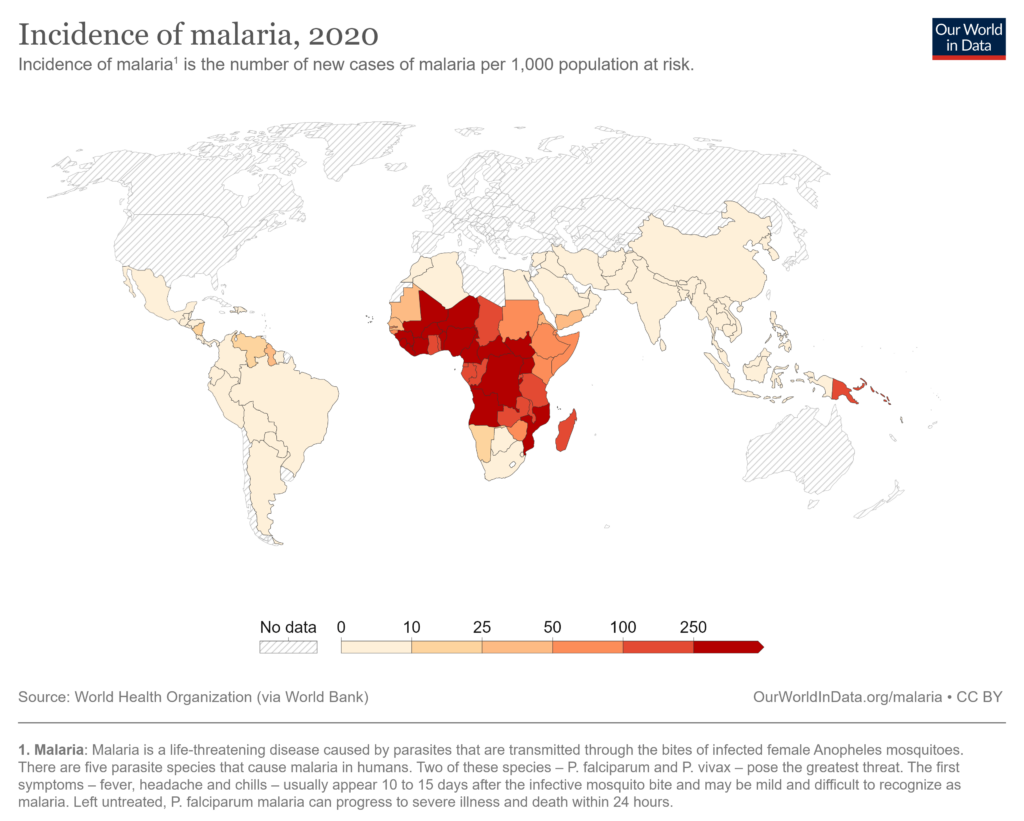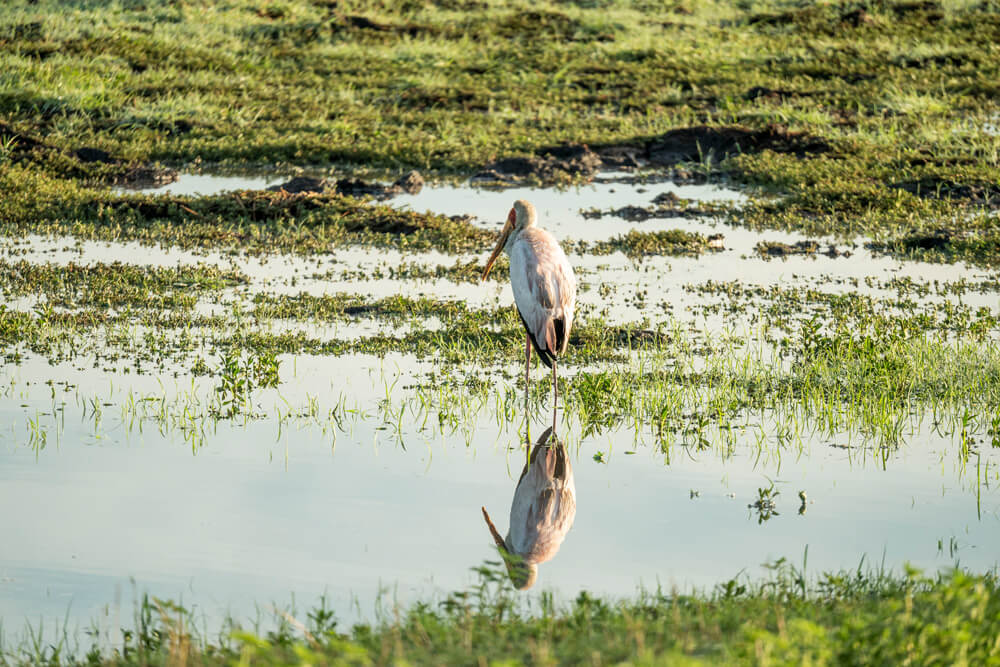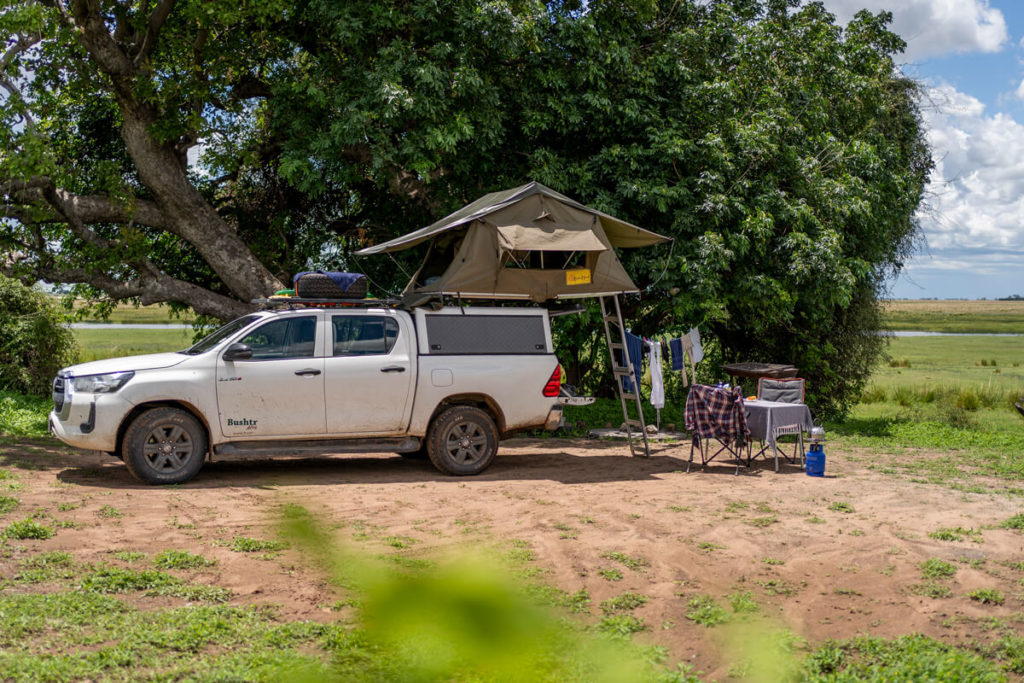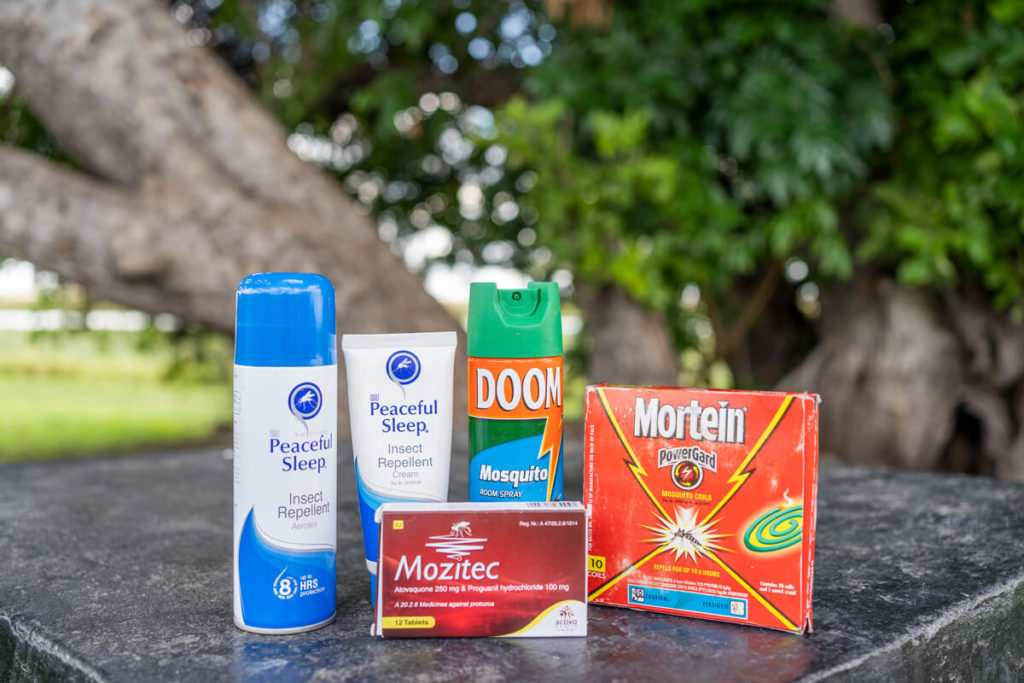Welcome to Botswana, a fascinating country in southern Africa known for its breathtaking nature and rich wildlife. While Botswana offers many unforgettable travel experiences, it’s important to be aware of potential health challenges, especially regarding malaria in Botswana. We also gave this topic a lot of thought before our trip and considered how best to protect ourselves.
Malaria is a mosquito-borne disease widespread in tropical and subtropical regions and can have unpleasant health consequences for travelers. The following article is intended to give you an overview of the malaria situation in Botswana, important preventative measures, and information to make your trip safe and worry-free. We also discuss our experience with malaria tablets. Enjoy browsing!
- Where does malaria occur in Botswana?
- How is malaria transmitted in Botswana?
- What are the typical symptoms of malaria?
- What is the healthcare system like in Botswana?
- How can I protect myself from malaria?
- Is prophylactic medication recommended?
- Our experience with malaria prophylaxis
- What first-aid kit do I need?
- Malaria in Botswana – Our conclusion
Where does malaria occur in Botswana?
Malaria is a parasitic infectious disease that is widespread in various parts of the world, particularly in tropical and subtropical regions. The disease is transmitted through the bite of infected female Anopheles mosquitoes.
On the following map, you can see where malaria is prevalent worldwide. Although the incidence of malaria in Botswana is relatively low compared to other African countries, the risk is particularly high in the north of the country (Caprivi (Namibia), Okavango Delta, Chobe Region).

In Botswana, it is important to note that not all regions are equally affected by malaria. Some areas are affected year-round, while others are only affected during the rainy season (overview of affected areas in Botswana). Malaria is prevalent in almost all of Botswana, but cases are unevenly distributed. In 2025, “only” 703 indigenous cases of malaria were recorded (source: World Malaria Report).
How is malaria transmitted in Botswana?
Malaria is transmitted by the Plasmodium parasite, which is carried by female Anopheles mosquitoes. Malaria is a serious and often fatal infectious disease that is widespread in many parts of Africa, including Botswana.
Although there has been significant progress in combating malaria in Botswana in recent years, the disease remains a serious threat to locals and travelers, especially during the rainy season when the mosquito population is at its highest. By the way, there is no vaccination against malaria!

What are typical symptoms of malaria?
The symptoms of malaria in Botswana can be flu-like and include fever, chills, headache, fatigue, nausea, diarrhea, and muscle pain. In severe cases, especially if malaria is not treated in time, organ failure, confusion, loss of consciousness, or coma can occur.
It is therefore important to note that the symptoms of malaria are often non-specific and can resemble those of other diseases. If malaria is suspected, you should seek medical help and have yourself examined immediately. Early treatment is crucial to avoid serious complications.
Important: Malaria can break out even weeks after your trip. Therefore, pay close attention to your symptoms if you are coming from a risk area!
What is the healthcare system like in Botswana?
Botswana has one of the best healthcare systems on the African continent, structured on three main levels. A network of several hundred health posts, often mobile and operating in remote villages, ensures almost universal medical coverage.
Around 250 rural health centers and smaller clinics provide solid primary care and serve as bases for the mobile health posts. In addition, there are 16 general hospitals nationwide. In addition to conventional medical facilities, around 2,000 traditional healers are state-certified throughout the country.
Treatment of children up to the age of 11 is free, while older patients only have to pay a small flat rate. This combination of modern and traditional approaches helps provide a wide range of healthcare services to the population.
How do I protect myself from malaria?
We were able to protect ourselves very well from mosquito bites during our 3-week tour of Botswana. This naturally includes a good insect repellent. We can recommend Peaceful Sleep (as a spray and/or cream). We sprayed ourselves with it several times a day, especially on exposed skin. Use an insect repellent that contains at least a 50 percent concentration of DEET.
Try sleeping indoors or using a mosquito net over your bed (our travel mosquito net*). The outer fabric of our rooftop tent conveniently had an extremely tight mesh, which prevented mosquitoes from entering the tent in the first place. Avoid being outdoors, especially during dusk and nighttime hours when mosquitoes are most active.

The choice of clothing can also be crucial. It’s best to wear long, light-colored clothing, as dark fabrics attract mosquitoes much more strongly. We waterproofed our clothing before the trip with the effective repellent Nobite*. It’s very expensive, but it does what it’s supposed to. We waterproofed our clothing before the trip and once during the trip, after washing everything. The effect lasts up to 2 to 4 weeks if you don’t wash the clothing.
In the evenings, we also wore closed shoes and socks, especially if we were still sitting by the fire and eating. We also recommend mosquito coils*, which you can buy locally at the supermarket. Simply light them and place them under your table or chair. Highly recommended as additional protection!
Is medical prophylaxis recommended?
There are various prophylactic medications that can be used to prevent malaria. These medications should be taken before your trip and can be taken daily or weekly, depending on the medication and dosage.
The choice of medication depends on several factors, including the length of your trip, your destination, and your individual health. It is important to consult a doctor before taking any prophylactic medication to find the appropriate medication and the correct dosage.
- High risk: Malaria medication is strongly recommended.
- Lower or low risk: Carrying emergency medication is recommended.
Our experience with malaria prophylaxis
Since we were in the humid Okavango Delta during the “malaria peak season” (November), we also took malaria tablets. We bought three packs of 12 tablets each from a pharmacy in Maun for just under €77 without a prescription (name: Mositec – similar to Malarone) and tolerated them very well. We didn’t experience any side effects. You can find an interesting article on this topic over at Kati and Hermann’s website: Malaria Prophylaxis in Botswana.
How to take: We had to start taking the medication one day before traveling to the risk area (Okavango Delta, Caprivi & Chobe). We then took one tablet every evening with our meal. We couldn’t stop taking it until seven days after leaving the risk area. If you contract malaria during your trip, adults should take four tablets daily for three consecutive days. We didn’t experience any side effects and tolerated the tablets very well.
Be sure to discuss your plans with a doctor and seek advice on malaria while you’re there. You can also make an appointment at a tropical institute and speak with a specialist. Ultimately, it’s up to you to decide whether or not you want to take prophylactic tablets. We can only speak from our own experience and say that we felt somehow safer with the malaria tablets in the high-risk area.

During our trip through Botswana, despite the rainy season, we hardly had any problems with mosquitoes and received maybe five bites in three weeks. This can, of course, vary from region to region. Our advantage was that we protected ourselves very well against bites using various methods.
The tablets obviously don’t protect against a bite or the disease itself, but they can alleviate the course of the illness. Please note, however, that the tablets are prescription-only in Germany. Therefore, make an appointment with your doctor in good time.
What first aid kit do I need?
A well-stocked first aid kit is an essential part of every safari packing list. Even though we usually bring more than we actually need, you never know exactly what might happen while on the road. Fortunately, we’ve hardly had to use our small first aid kit so far, apart from the occasional plaster, headache tablets, or wound ointment.
Especially for our three-month trip to Africa, it was important to us to be well prepared and leave nothing to chance. Although many products are available locally in supermarkets and pharmacies, it can sometimes be necessary to act quickly. Sunscreen, in particular, is often overpriced abroad, which is why we always bring enough from home.
Whether it’s stomachache, toothache, headache, diarrhea, cough, cold, sore throat, earache, minor wounds, sunburn and sunstroke, allergies, food poisoning, travel sickness, or seasickness – you can always get sick from something while traveling. We are always prepared for some of these illnesses because we know our own bodies well and know exactly what could potentially affect us.
Safari packing list – Our travel first aid kit:
- Sunscreen with UV protection factor 50
- We always buy mosquito spray locally (e.g., Peaceful Sleep)
- Lopedium acute for acute diarrhea (also herbal stomach drops*) | order here*
- Travel tablets AL (for fear of flying, waves, lots of curves, etc.) | Order here*
- Ibuprofen and/or Paracetamol painkillers | Order here*
- Grippostad C (for colds) | Order here*
- Cough drops | Lemocin lozenges* (it’s easy to catch a cold on a plane)
- Nasal drops and Tiger Balm (light) | Order here*
- Bepanthen wound and healing ointment | Order here*
- Small plaster set | Order here*
Savings tip:We always order all the necessary items for our travel medicine kit from the online pharmacy APO-Discounter*. The prices are simply unbeatable compared to a conventional pharmacy. To illustrate this, here’s an example: We paid only €1.99 online for Lopedium Akut (10 tablets), while the pharmacy in our neighborhood would have charged €5 to €6. Grippostad C is also available online for about €5 less. Of course, there are many other online providers you can take a closer look at. However, we are personally extremely satisfied with the service of the APO discounter.
Malaria in Botswana – Our Conclusion
In summary, with good preparation and appropriate precautions, you can protect yourself well from mosquitoes in Botswana. Wear light-colored, long clothing and closed shoes, avoid being outdoors in the evenings, and use effective insect repellent (at least 50% DEET).
Also, waterproof your clothing before your trip for even better protection against mosquito bites. If you are traveling to a high-risk area, be sure to speak to your doctor beforehand and get advice on malaria prophylaxis.